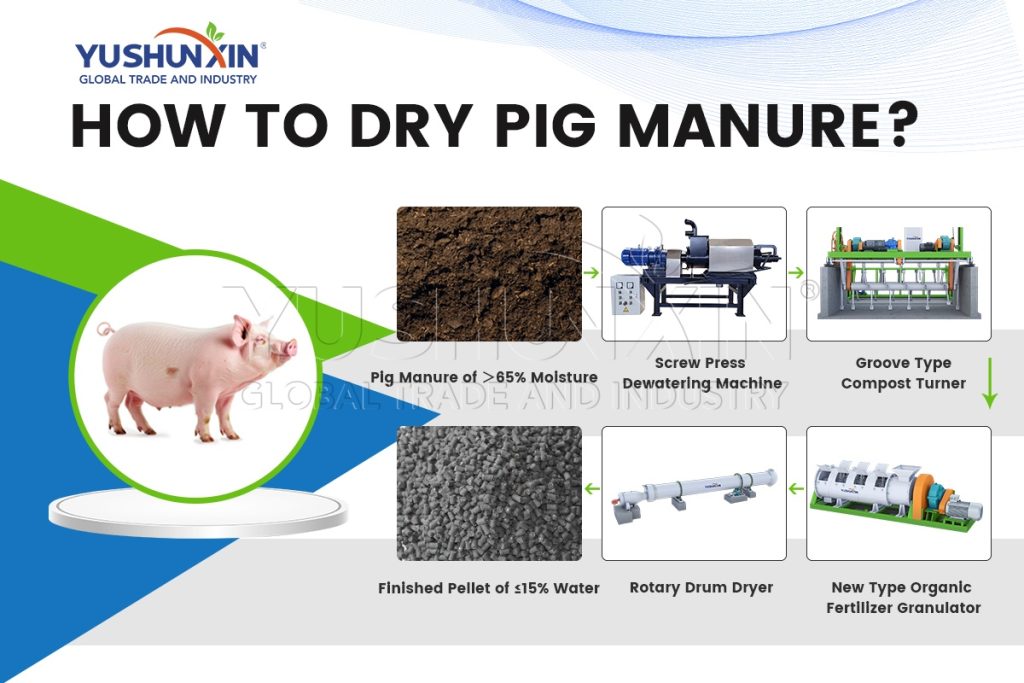Proper drying plays a vital role in enhancing the quality of pig manure fertilizer. The process not only reduces moisture content but also affects the overall nutrient profile and usability of the final product. By understanding the intricacies of dewatering and drying, stakeholders can significantly improve their organic waste management practices.
What Are the Key Raw Materials and Their Needs?
High-moisture organic waste represents a common challenge in waste management. Pig manure, which often contains over 90% moisture, requires effective drying methods to transform it into a usable fertilizer. The needs of various industries relying on organic fertilizers vary, as they look for products that not only provide essential nutrients but also present in a manageable form.
The swine industry generates substantial quantities of manure that, when untreated, can create environmental concerns. For instance, maintaining hygiene and managing nutrient runoff are critical for producers. Reducing moisture content helps in stabilizing the manure, making it easier to handle, store, and apply. Additionally, processed pig manure presents a more concentrated fertilizer with enhanced nutrient availability, which can benefit users seeking effective soil amendments.
How Does the Drying Process Work?
The drying process encompasses several stages aimed at significantly reducing the moisture content of pig manure. Initially, the manure undergoes dewatering, which removes excess water and prepares it for subsequent drying. Following this, the manure can either be composted or granulated, depending on the desired end product.
Dewatering machines, typically the first stage of the drying process, effectively extract moisture from the pig manure. As water reduction occurs, the manure undergoes physical changes that enhance its properties, ensuring improved nutrient retention, reduced odor, and minimized pathogens.
Once the initial dewatering phase is complete, the drying process truly begins. Advanced drying equipment, such as rotary dryers or belt dryers, plays a crucial role in this stage. These machines utilize heat and controlled airflow to reduce the moisture content of the manure to below 10%. This reduction not only stabilizes the fertilizer but also improves its shelf life and prevents unwanted microbial growth.
What Are the Additional Benefits of Effective Drying?
Effective drying offers several additional benefits that improve the quality of pig manure fertilizer. Firstly, reducing moisture content increases the nutrient density of the final product. This concentration of nutrients means that less fertilizer is required to achieve the same results, ultimately providing cost savings for those in need of high-quality inputs.
Moreover, a well-dried product exhibits enhanced granulation properties. By reducing moisture, the granulating process becomes more efficient, resulting in uniform granules that are easy to handle and apply. The transition from wet manure to granules helps in creating a stable product that maintains its integrity during storage and transportation.
Additionally, the overall process of drying contributes to odor control. High moisture levels often lead to the production of foul odors, which can be detrimental to nearby communities. By efficiently reducing moisture through specialized equipment, the resulting fertilizer exhibits far less odor, contributing to better relations with surrounding areas.

How Can Specialized Equipment Optimize the Drying Process?
To achieve superior drying outcomes, specific equipment must be employed throughout the process. Along with dewatering machines, composters and drying machines play integral roles. For instance, the introduction of a wet granulator enhances the production of high-quality granules from pig manure.
In a well-designed system, producers can implement a combination of these machines to streamline the drying process. A comprehensive setup could comprise dewatering machines, composting equipment, and drying systems, allowing the moisture to be reduced systematically from above 90% to below 10%.
As industries look to improve their waste management processes, collaborating with a professional drying equipment manufacturer, like Yushunxin, can provide the necessary technology to optimize production. By investing in such equipment, producers can ensure the effective transformation of pig manure into high-quality fertilizer, benefiting both their operations and the environment.
Conclusion
Proper drying significantly enhances the quality of pig manure fertilizer. By addressing the specific needs of swine producers and utilizing effective drying techniques, stakeholders can produce a stable, nutrient-rich product that addresses environmental concerns. With the right machinery and techniques, the entire drying process—from dewatering to granulation—can be optimized, ultimately leading to superior organic fertilizer solutions. Exploring partnership opportunities with advanced equipment manufacturers may prove essential for those dedicated to improving their manure management systems. You can visit: https://www.fertilizerdryer.com/how-to-dry-pig-manure/